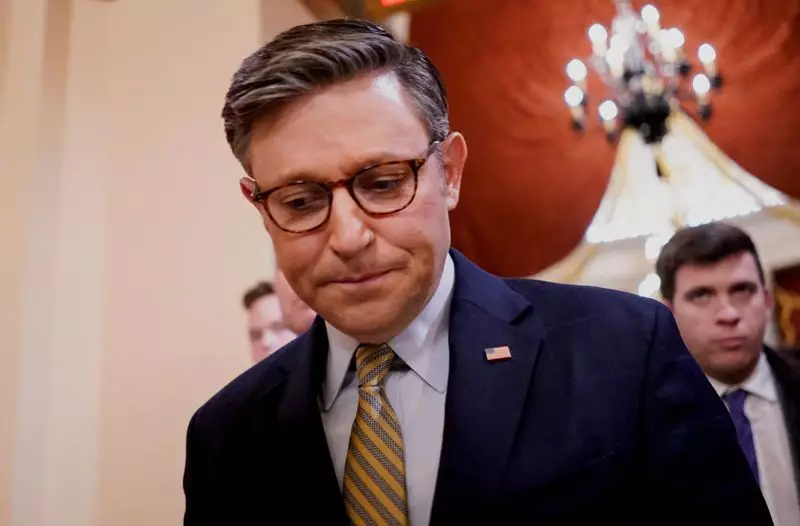In a significant legislative move, the Republican-led U.S. House of Representatives has managed to pass a bill aimed at preventing a potential government shutdown. This decision comes amidst ongoing tensions surrounding fiscal responsibility and the looming issues related to national debt. While the bill is a necessary measure to ensure continued government operations, the dynamics at play reveal much about the current political landscape and the pressing fiscal challenges that lie ahead.
On a recent Friday, the House approved a funding extension that would sustain government operations through March 14. This measure is characterized by its bipartisan support, a telling sign of collaboration amidst a polarized political environment, passing with a vote tally of 366-34. The legislation not only averts a shutdown but also allocates substantial resources: $100 billion earmarked for states recovering from disasters, and another $10 billion directed to support farmers. Such provisions are critical at a time when many communities are still grappling with the aftermath of recent calamities. However, the bill notably omits any measures regarding raising the debt ceiling—a necessary but contentious talking point pushed by former President Trump.
The refusal to raise the debt ceiling reveals deeper disagreements within the party and showcases the complexities of fiscal policy in an age of massive national debt, which exceeds $36 trillion. Trump’s insistence on increasing this limit has met stiff resistance even within his ranks, with 38 Republicans voting against the proposal. This internal dissent indicates a growing faction of the party that prioritizes austerity and fiscal discipline over expansive spending plans, arguing that the current trajectory compromises the nation’s financial future. Rich McCormick, a Republican representative who opposed the bill, emphasizes that failing to address the root causes of debt better positions the U.S. on a path to financial irresponsibility.
The ramifications of a government shutdown stretch far beyond political gridlock. It threatens to disrupt essential services, impact law enforcement, and even endanger the livelihoods of millions of federal employees who rely on timely paychecks. The travel industry highlights the possible financial fallout; a shutdown could cost the sector an estimated $1 billion weekly, coinciding with the peak holiday travel season. Such figures underscore the interconnected nature of government operations and the economy at large, raising important questions about the viability of operational continuity in crisis situations.
Despite moments of collaboration, this recent legislative effort underscores a persistent challenge for lawmakers: reconciling differing priorities on government spending without alienating various factions within their parties. House Speaker Mike Johnson articulated the Republican Party’s strategy moving forward—focusing on greater influence over budgetary decisions next year when both the legislature and the presidency will align with its priorities. The fading vestiges of bipartisanship portrayed by the recent bill passage are met with skepticism, especially concerning the modifications pushed by the party in response to external pressures, such as those from influential individuals like Elon Musk.
The passage of the funding bill might provide a temporary resolution, but the long-term financial strategies of Congress remain unresolved. As Congress examines the future of the debt ceiling next year, discussions will likely intensify around how to manage expenditures amid demands for tax cuts. Democratic leaders have expressed mixed feelings about the current package, emphasizing its critical achievements but also highlighting that important objectives remain to be debated in the upcoming legislative sessions.
This brief legislative victory may serve as a stepping stone rather than a permanent fix. The necessity for further negotiation looms large, with both sides bracing themselves for a new year filled with complex fiscal discussions. The intricate balance between spending, debt management, and bipartisan cooperation is not just a matter of policy; it is indicative of how American governance must adapt to address the economic realities of the 21st century.
The recent House vote on government funding may thwart a shutdown, but the underlying debates on fiscal policy, governmental efficiency, and strategic spending remain unresolved and poised to dominate the discourse in upcoming congressional sessions. As legislators gear up for another financial battle, the importance of prudent economic management and collaborative governance will undoubtedly continue to emerge as critical themes in American politics.

